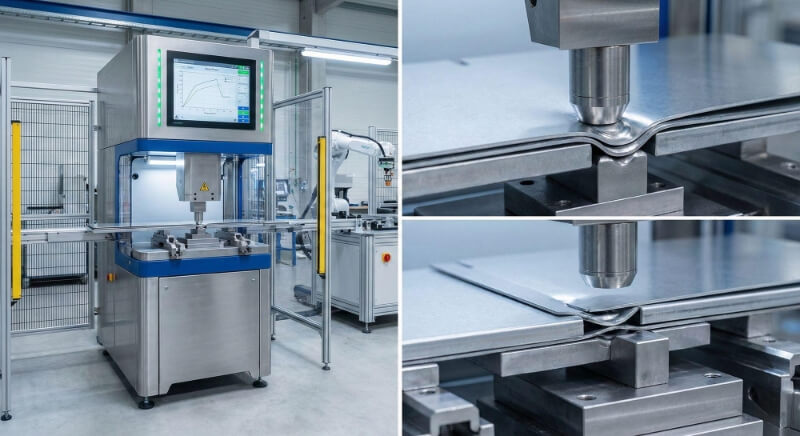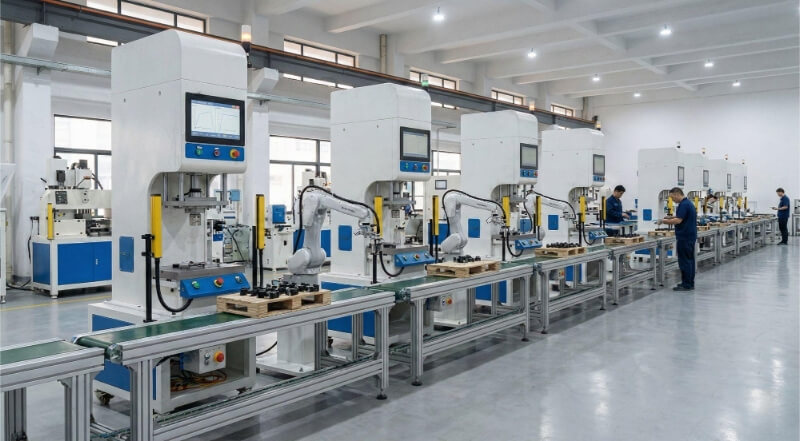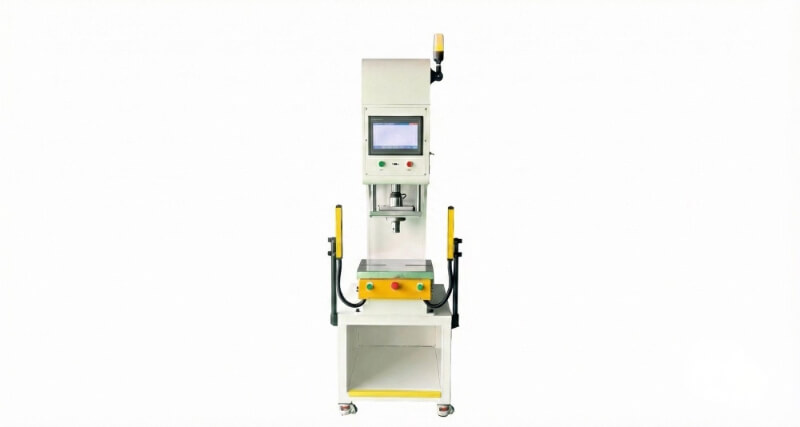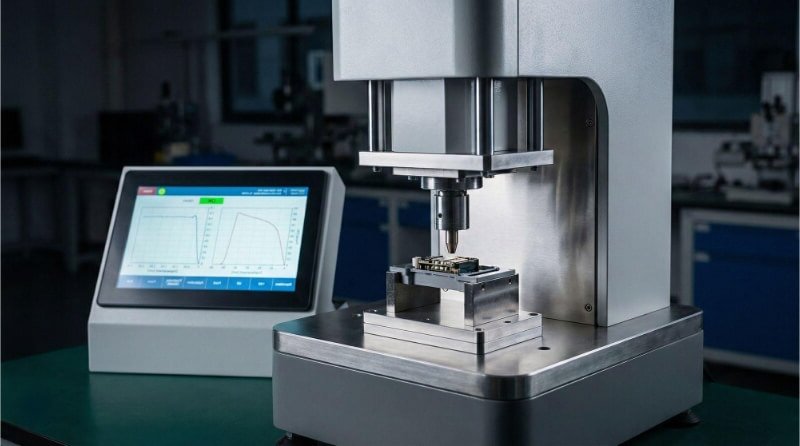많은 기업이 다양한 작업에 강하고 신뢰할 수 있는 금속을 필요로 합니다. 때로는 일반 탄소강만으로는 충분하지 않을 때가 있습니다. 녹, 무거운 하중 또는 열악한 작업 조건으로 인해 문제가 발생할 수 있습니다. 저합금강은 이러한 문제에 대한 하나의 해답입니다. 이 소재는 강도가 높고 내마모성이 뛰어나며 까다로운 프로젝트에 적합한 향상된 성능을 제공합니다.
이 유형의 강철은 비용과 성능 사이의 간극을 메워줍니다. 비용 효율성은 유지하면서 더 많은 스트레스와 열을 견딜 수 있습니다. 이 소재가 독특하고 가치 있는 이유를 분석해 보겠습니다.

저합금강이란?
저합금강은 보통 1%에서 8% 사이의 소량의 원소가 첨가된 강철 유형입니다. 이러한 원소는 강철의 강도, 경도, 녹에 대한 저항성 및 인성을 향상시키기 위해 첨가됩니다. 일반적으로 첨가되는 원소로는 크롬, 니켈, 몰리브덴, 바나듐 등이 있습니다. 이러한 원소들은 일반 탄소강보다 강도와 내구성이 뛰어나지만 스테인리스 스틸의 높은 비용 없이도 강도를 높일 수 있습니다.
첨가되는 원소의 종류와 양은 강철의 성능에 영향을 미칩니다. 일부 저합금 강철은 다음에 더 좋습니다. 용접. 다른 강재는 균열 없이 고열이나 심한 응력을 견딜 수 있습니다. 제조업체는 강철의 용도에 따라 적합한 조합을 선택합니다.
저합금강의 구성
저합금강은 탄소강에 소량의 특정 원소를 첨가하여 만듭니다. 목표는 소재를 너무 비싸게 만들거나 작업하기 복잡하게 만들지 않으면서 성능을 개선하는 것입니다.
저합금강에 첨가되는 각 원소에는 분명한 목적이 있습니다. 소량이라도 이러한 원소는 강철의 거동을 크게 개선할 수 있습니다:
- 크롬 (0.5% - 1.5%): 경도와 내마모성이 증가합니다.
- 니켈 (0.5% - 3.5%): 추운 온도에서 인성과 성능이 향상됩니다.
- 몰리브덴 (0.1% - 0.6%): 강도와 내열성을 추가합니다.
- 망간 (0.5% - 1.5%): 강도를 높이고 열처리 중 경화를 돕습니다.
- 바나듐 (0.05% - 0.15%): 강철을 강화하고 입자 구조를 개선합니다.
- 규소 (0.1% - 0.5%): 강철을 너무 부서지게 만들지 않으면서 강도를 높입니다.
- 구리 (0.2% - 0.5%): 습한 환경에서 녹에 대한 저항력을 향상시킵니다.
이러한 원소는 신중하게 선택되어 소량씩 첨가되며, 일반적으로 총 합금 함량은 8% 미만입니다. 정확한 배합 비율은 강철의 용도에 따라 달라집니다.
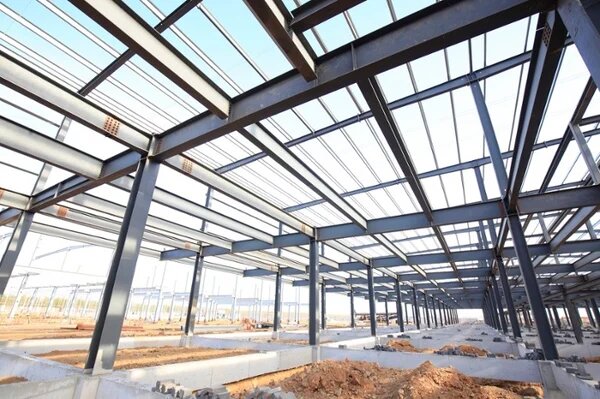
기계적 성질
저합금강은 까다로운 환경을 견딜 수 있도록 설계되었습니다. 기계적 특성으로 인해 표준 탄소강보다 더 강하고, 더 까다롭고, 더 오래 지속됩니다.
강도 및 경도
저합금강은 일반적으로 일반 탄소강보다 인장 및 항복 강도가 높습니다.
- 인장강도: 일반적으로 합금 및 열처리에 따라 500~1,200MPa 범위입니다.
- 항복 강도: 보통 350~1,000MPa 사이입니다.
즉, 이 강철은 구부러지거나 부러지지 않고 더 무거운 하중을 견딜 수 있습니다. 경도 또한 향상됩니다. 예를 들어
- 몰리브덴과 바나듐을 첨가하면 로크웰 경도는 등급과 처리에 따라 25 HRC에서 40 HRC 이상까지 다양합니다.
연성 및 인성
저합금강은 강도와 성형성 사이의 균형이 잘 잡혀 있습니다.
- 휴식 시 신장: 일반적으로 12%에서 25% 사이에 속하며, 이는 강철이 부러지기 전에 늘어날 수 있음을 의미합니다.
- 샤피 V-노치 충격 에너지: 실온에서 20J~100J 이상, -20°C에서 27J 이상(ASTM A633과 같은 거친 등급의 경우)까지 가능.
피로 및 내마모성
반복적인 스트레스는 시간이 지남에 따라 부품의 고장을 일으킬 수 있습니다. 저합금강은 일반 탄소강에 비해 피로에 더 잘 견딥니다.
- 피로 강도: 많은 저합금강의 경우, 표면 마감, 하중 유형, 그리고 열처리.
- 내마모성: 강철 매트릭스에서 더 복잡한 탄화물을 형성하는 크롬 및 몰리브덴과 같은 원소에 의해 강화됩니다.
물리적 특성
저합금강은 기계적 강도만 제공하는 것이 아닙니다. 물리적 특성도 다양한 환경에서 얼마나 잘 작동하는지에 영향을 미칩니다.
밀도 및 융점
저합금강의 밀도는 일반 탄소강과 비슷한 약 7.85g/cm³입니다. 따라서 상대적으로 무겁기 때문에 무게와 안정성이 필요한 구조 부품에 유용합니다.
녹는점은 일반적으로 합금 원소에 따라 1425°C~1540°C(2597°F~2800°F) 사이입니다. 예를 들어
- 4140 스틸 (표준 저합금강)은 약 1416°C~1460°C에서 녹습니다.
- 니켈 또는 크롬 함량이 높으면 녹는점이 높아질 수 있습니다.
전기 및 열 전도성
저합금강은 구리나 알루미늄과 같은 순수 금속에 비해 전기와 열의 전도성이 떨어집니다:
- 전기 전도성: 약 10% IACS(국제 어닐링 구리 표준), 구리는 100%입니다.
- 열 전도성: 일반적으로 25~50W/m-K인 반면 구리는 380W/m-K 이상입니다.
이 때문에 저합금강은 전기 배선이나 방열판에는 사용되지 않습니다. 하지만 전도도가 낮기 때문에 더운 환경에서 더 안정적입니다. 실리콘과 망간과 같은 합금 원소는 전도도를 더욱 낮추지만 구조적 안정성을 높입니다.
부식 저항
저합금강은 일반 탄소강보다 녹에 더 잘 견디지만 스테인리스강만큼은 아닙니다. 내식성은 합금 원소의 종류와 양에 따라 달라집니다:
- 크롬 (0.5% 이상)은 부식을 늦추는 데 도움이 되는 수동 산화물 층을 형성합니다.
- 구리 (약 0.2% - 0.5%)는 습한 환경이나 해양 환경에서 저항력을 높여줍니다.
예를 들어 ASTM A588과 같은 풍화강은 구리, 크롬, 니켈을 사용하여 대기에 노출될 때 보호 표면층을 형성합니다. 그러나 대부분의 저합금강은 여전히 코팅, 아연 도금 또는 그림 특히 실외 또는 화학 물질이 많은 환경에서 장기간 보호할 수 있습니다.
저합금강의 분류
저합금강은 엔지니어, 제조업체 및 구매자가 올바른 소재를 선택하는 데 도움이 되는 공식적인 분류 체계로 구성되어 있습니다. 이러한 시스템은 강철의 구성, 강도, 용접성, 마모 또는 부식에 대한 저항성을 정의합니다.
ASTM 및 SAE 표준
저합금강을 분류하는 데는 일반적으로 두 가지 주요 시스템이 사용됩니다: ASTM과 SAE입니다.
ASTM (미국 재료 시험 협회)는 강철의 제조 및 시험 방법에 대한 규격을 제공합니다. 이러한 표준은 건설, 구조물, 파이프라인, 압력 용기 등에 널리 사용됩니다.
예시:
- ASTM A572 - 고강도 저합금 구조용 강철입니다.
- ASTM A514 - 중장비에 사용되는 담금질 및 강화 합금강입니다.
SAE (미국자동차공학회)는 4자리 숫자 체계를 사용합니다. 기계 공학 및 자동차 설계에서 자주 사용됩니다.
예시:
- SAE 4140 - 우수한 강도, 인성 및 내마모성으로 알려진 크롬-몰리브덴 강철입니다.
학년 번호 및 명칭 이해
강재 등급 번호는 단순한 라벨이 아니라 강재에 무엇이 들어 있고 어떻게 작동하는지에 대한 단서를 제공합니다.
SAE 등급:
- 처음 두 자리는 주요 합금 그룹을 나타냅니다.
- 마지막 두 자리는 대략적인 탄소 함량을 100분의 1 퍼센트로 나타냅니다.
ASTM 등급:
- 문자와 숫자를 혼합하여 적용 분야와 강도 수준을 설명합니다.
고강도 저합금(HSLA) 강재
HSLA 강재는 저합금강의 하위 범주입니다. 일반 탄소강에 비해 더 높은 중량 대비 강도, 향상된 용접성 및 향상된 내식성을 제공하도록 특별히 개발되었습니다.
일반적인 HSLA 등급:
- ASTM A572 - 교량과 건물에 사용됩니다.
- ASTM A588 - 실외 구조물의 내후성으로 잘 알려져 있습니다.
- ASTM A709 - 고속도로 및 철도 교량 건설에 널리 사용됩니다.

장점과 한계
저합금강은 여러 가지 이점을 제공하지만 몇 가지 단점도 있습니다. 두 가지를 모두 알면 엔지니어와 구매자가 소재를 선택할 때 보다 현명한 선택을 할 수 있습니다.
저합금강의 장점
저합금강은 여러 면에서 일반 탄소강보다 우수한 성능을 제공합니다.
- 더 높은 강도 는 내구성을 잃지 않고 더 얇고 가벼운 부품을 사용할 수 있음을 의미합니다.
- 더 나은 인성 는 충격이나 추운 환경에서도 부품이 균열에 견딜 수 있도록 도와줍니다.
- 내식성 향상 열악한 환경에서 부품의 수명을 연장합니다.
- 좋은 용접성 를 사용하면 복잡한 모양으로 쉽게 제작할 수 있습니다.
- 비용 효율적 스테인리스나 이국적인 합금에 비해 훨씬 저렴합니다.
잠재적 단점 및 디자인 트레이드 오프
저합금강이 모든 용도에 완벽한 것은 아닙니다.
- 비용이 더 높습니다. 원소가 추가되어 탄소강보다 강도가 높습니다.
- 제한된 내식성 스테인리스 스틸에 비해
- 더 복잡한 열처리 목표 속성을 달성하기 위해 필요할 수 있습니다.
- 용접 균열 위험 제작 과정에서 적절하게 제어되지 않는 경우.
- 연성 감소 특히 경화 후 일부 학년에서는 더욱 그렇습니다.
저합금강의 응용 분야
저합금강은 강도, 내구성, 비용 관리가 필요한 많은 산업에서 사용됩니다. 저합금강은 스트레스, 열, 열악한 환경에서도 고장 없이 견딜 수 있는 부품을 제작하는 데 도움이 됩니다.
건축 및 구조 부품
건축에서는 보, 기둥, 지지 프레임에 저합금강을 사용합니다. 무게 대비 강도가 높기 때문에 안전성을 포기하지 않으면서도 구조물을 더 가볍게 만들 수 있습니다. 교량, 건물, 타워에는 주로 HSLA 강재가 선택됩니다. 또한 일반 탄소강보다 날씨에 의한 손상에도 더 잘 견딥니다.
압력 용기 및 보일러
저합금강은 압력 용기, 탱크 및 보일러에 널리 사용됩니다. 이러한 부품은 균열 없이 높은 열과 압력을 견뎌야 합니다. ASTM A387과 같은 강재에는 크롬과 몰리브덴이 함유되어 있어 내열성을 향상시키는 데 도움이 됩니다. 이러한 소재는 또한 우수한 인성과 장기적인 신뢰성을 제공합니다.
자동차 및 중장비
자동차 산업에서는 기어, 차축, 크랭크샤프트, 서스펜션 부품에 저합금강을 사용합니다. 이러한 강철은 부품을 최대한 가볍게 유지하면서 강도와 내마모성을 제공합니다. 중장비에서 저합금강은 다음과 같은 용도로 사용됩니다. 프레임블레이드 및 하중을 견디는 부품에 사용됩니다. 부품이 거친 사용과 충격 하중을 견디는 데 도움이 됩니다.
항공우주 및 국방
일부 저합금강은 항공기 및 방위 장비에 사용됩니다. 저합금강은 강하고 가벼우며 신뢰할 수 있어야 하는 부품에 선택됩니다. 랜딩 기어, 장갑판, 미사일 시스템과 같은 부품에는 특수 처리된 저합금강이 포함될 수 있습니다. 이러한 강재는 고장이 발생할 수 없는 극한 조건에서 우수한 성능을 발휘합니다.
저합금강과 다른 소재 비교
프로젝트에 적합한 금속을 선택할 때는 주요 옵션을 나란히 비교하는 것이 도움이 됩니다. 저합금강이 고합금강 및 스테인리스강과 성능, 비용, 용도 면에서 어떻게 비교되는지 간략하게 살펴보세요.
| 속성 / 기능 | 저합금강 | 고합금강 | 스테인레스 스틸 |
|---|---|---|---|
| 합금 콘텐츠 | 8% 미만 | 8% 이상 | 10.5% 이상의 크롬 |
| 힘 | 높은 | 매우 높음(등급에 따라 다름) | 보통에서 높음 |
| 부식 저항 | 보통의 | 다양함(합금이 많을수록 좋음) | 매우 높음 |
| 비용 | 낮추다 | 더 높은 | 더 높은 |
| 용접성 | 좋은 | 합금 함량이 높기 때문에 더 단단할 수 있습니다. | 좋음(일부 성적은 다른 성적보다 좋음) |
| 일반적인 사용 | 구조, 자동차, 기계 | 공구, 항공우주, 고응력 부품 | 식품 장비, 의료 도구, 배관 |
| 내열성 | 보통에서 좋음 | 양호에서 우수로 | 매우 좋은 |
| 내마모성 | 좋은 | 우수(예: 공구강) | 좋은 |
결론
저합금강은 성능과 비용의 강력한 균형을 제공합니다. 강도, 인성 및 내식성을 향상시키는 소량의 합금 원소가 포함되어 있습니다. 건축, 자동차, 압력 용기 등에 널리 사용됩니다. 다양한 등급과 특성으로 다양한 까다로운 용도에 적합합니다.
프로젝트에 적합한 저합금강을 선택하는 데 도움이 필요하신가요? 당사의 팀이 귀사의 제조 요구 사항을 지원해 드립니다. 지금 바로 문의하세요 를 클릭하여 전문가의 조언과 빠른 견적을 받아보세요.
안녕하세요, 저는 케빈 리입니다

지난 10년 동안 저는 다양한 형태의 판금 제작에 몰두해 왔으며 다양한 워크숍에서 얻은 경험에서 얻은 멋진 통찰력을 이곳에서 공유했습니다.
연락하세요

케빈 리
저는 레이저 절단, 굽힘, 용접 및 표면 처리 기술을 전문으로 하는 판금 제조 분야에서 10년 이상의 전문 경험을 갖고 있습니다. Shengen의 기술 이사로서 저는 복잡한 제조 문제를 해결하고 각 프로젝트에서 혁신과 품질을 주도하는 데 최선을 다하고 있습니다.

